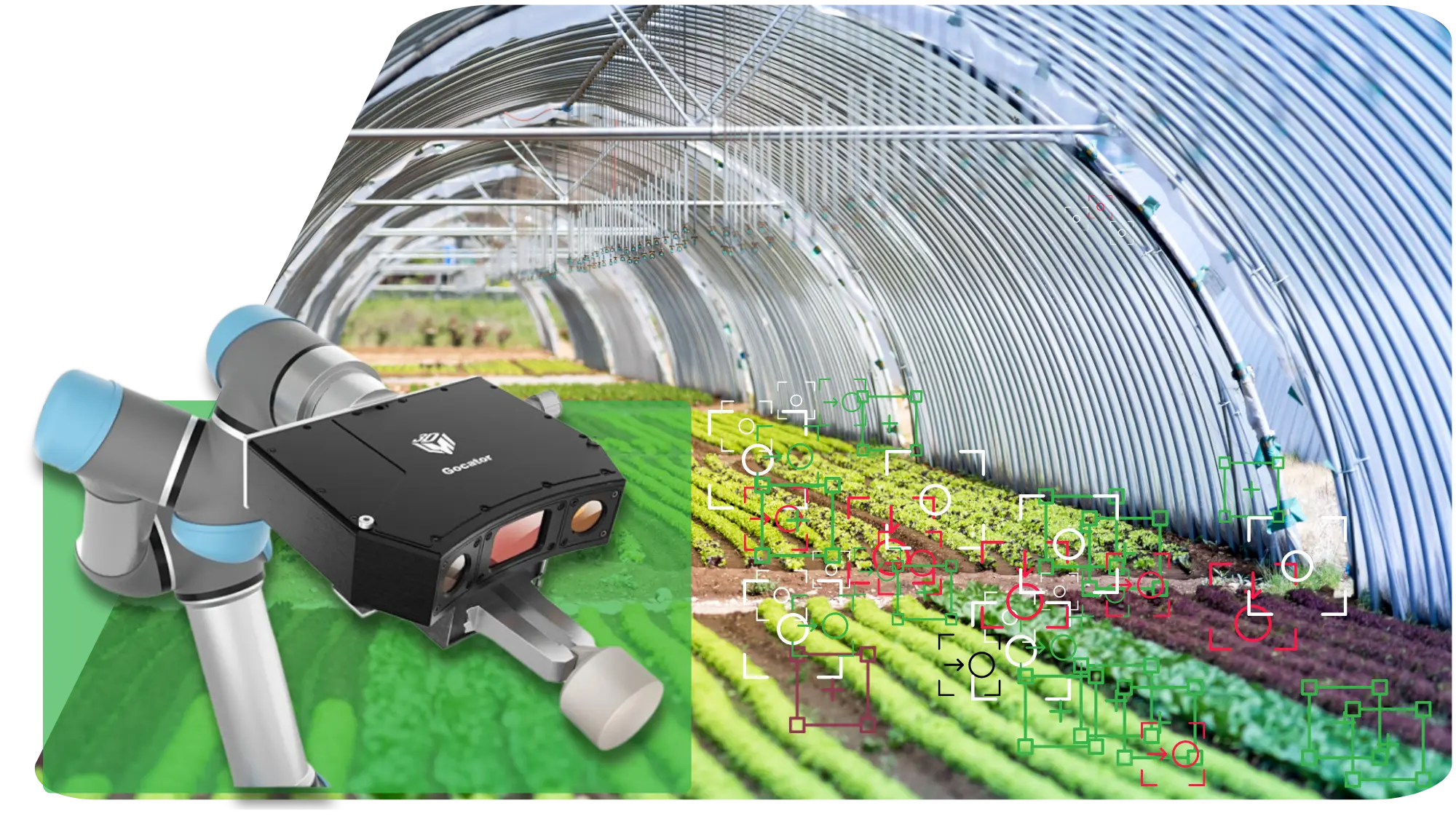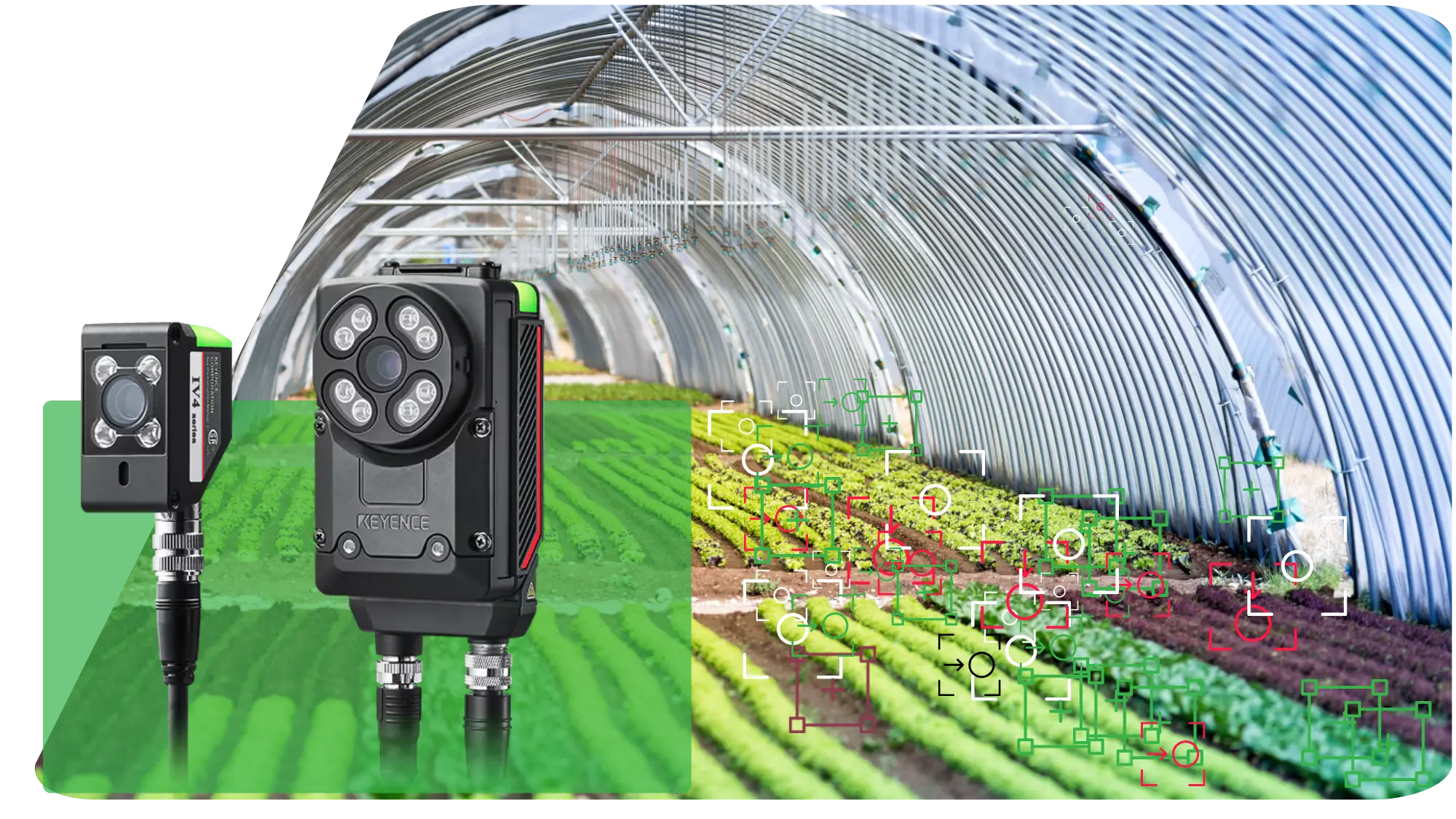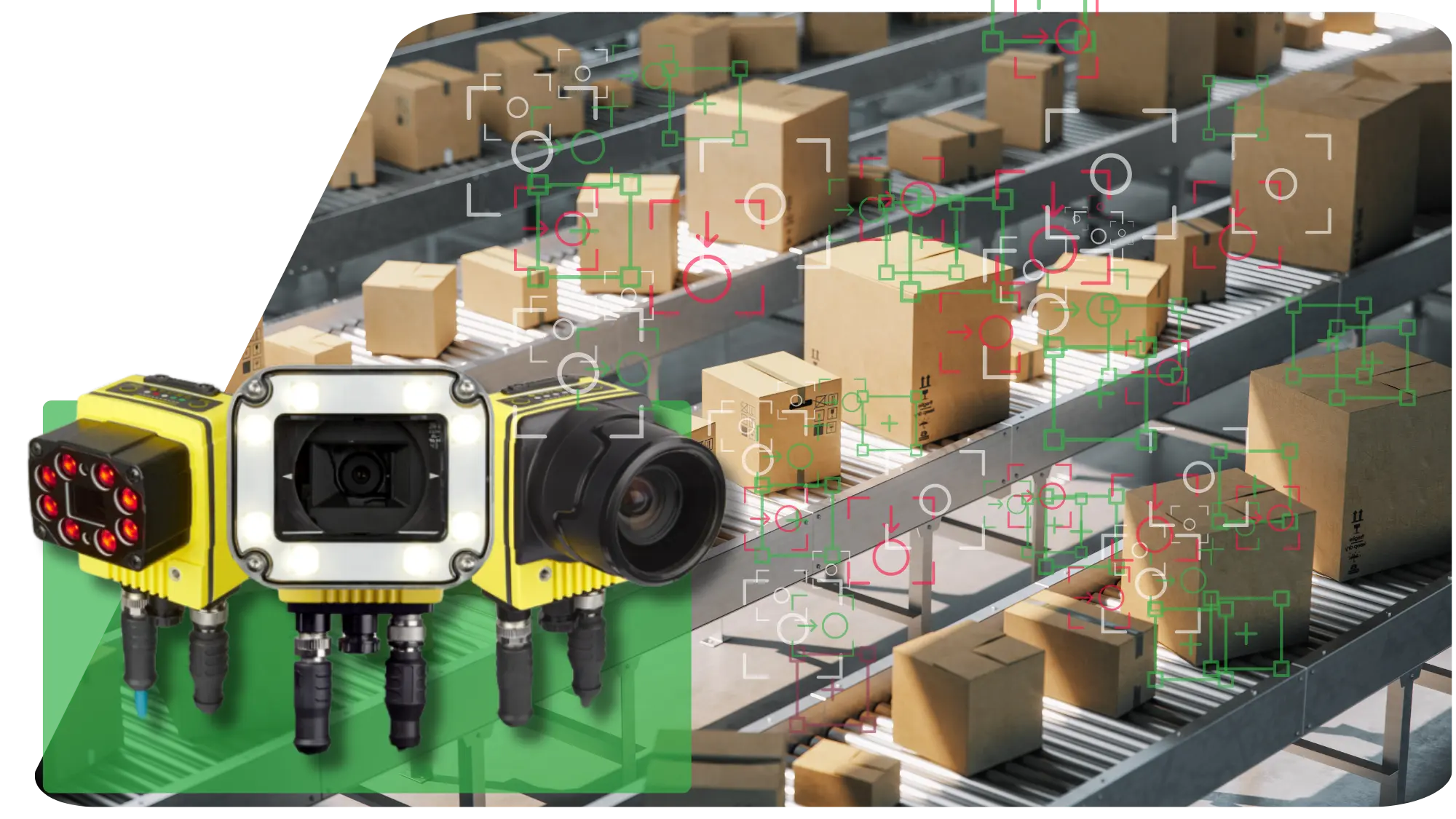Vision Systems for Proven Systems
Machine Vision Services for Modern Manufacturing
We are integrators who work with top brands such as Omron, Keyence, Allen-Bradley and Cognex, to deliver advanced inspection systems. Whether you need automated defect detection, 3D alignment, or tolerance monitoring, we will design and implement solutions custom-built for your business.

Vision Technology That Evolves with You
Our modular, scalable systems grow with your business needs, ensuring long-term value.
01
Flexible Smart Cameras
02
3D Vision Systems
Capture depth for applications like automated bin picking or assembly, to streamline production.
03
Data Recording & Reporting
Record inspection data for compliance and process optimization for better decision-making.
04
Scalable Architecture
Add capabilities like defect detection or barcode reading to support growing market demands.
05
Edge Computing Integration
Process data locally for faster responses and reduced network load for operational efficiency.
Driving Flawless Operations Across Industries
Whether tracking inventory, detecting flaws, or guiding robotics, our machine vision systems combine cutting-edge AI with practical solutions to improve operations across all sectors.
Quality Assurance Made Effortless
Automate inspection processes to ensure defect-free products.
- Automated Defect Detection: Identify scratches, dents, or inconsistencies instantly.
- Dimensional Verification: Maintain product specifications with pinpoint accuracy.
- Surface Inspection: Catch imperfections invisible to the human eye.
- Color & Pattern Matching: Guarantee brand consistency with advanced color-matching tools.

Logistics and Inventory Optimization
Revolutionize supply chain visibility with machine vision.
- Pallet Scanning: Streamline incoming and outgoing shipments.
- Package Tracking: Prevent errors with barcode reading and real-time location updates.
- Pick and Pack Sorting: Accelerate order fulfillment with automated sorting systems.
- Label Printing and Verification: Reduce errors with AI-driven label inspection.

Process Automation for Efficiency
Accelerate production workflows with machine vision-guided robotics.
- Robotic Vision: Enable robotic arms to handle precise picking, assembly, and sorting tasks.
- Positioning & Alignment: Ensure tools and components align perfectly during assembly.
- Presence Verification: Confirm correct placement of parts to prevent costly rework.

Real-Time Insights & Reporting
Make data-driven decisions with actionable insights.
- Feedback Loops: Correct issues instantly with real-time performance feedback.
- Data Recording & Reporting: Track inspection outcomes for compliance and optimization.
- Tolerance Monitoring: Alert teams when processes deviate from acceptable limits.

Industry-Specific Use Cases
Address unique challenges in various sectors.
- Automotive: Ensure precise welds and flawless assembly.
- Pharmaceuticals: Guarantee compliance with blister pack inspections.
- Food & Beverage: Detect contaminants and track packaging accuracy.

Machine Vision: Case Studies & Insights
See how leaders use SCADA/HMI to boost efficiency, maintain standards, and drive improvement with real-world examples.
case study
How Surrette Batteries Unlocked Efficiency Through Our Manufacturing Consulting Services
Frequently Asked Questions
What is machine vision and what types of systems exist?
Machine vision is a transformative technology that enables machines to capture, process, and interpret visual data for tasks such as inspection, measurement, and automation. By utilizing cameras, sensors, and sophisticated algorithms, machine vision systems analyze images to detect defects, measure dimensions, or verify product consistency—delivering unmatched speed and precision.
These systems combine image acquisition with advanced processing to execute tasks based on predefined criteria. For instance, in manufacturing, they can identify surface cracks on metals or confirm proper label placement on packaging. By automating these processes, machine vision reduces human error and accelerates production.
There are three main types of machine vision systems:
- 2D systems for flat image analysis.
- 3D systems for depth and spatial insights.
- AI-integrated systems for advanced pattern recognition and variable condition handling.
When should you use machine vision?
Machine vision is ideal for applications such as quality inspection, defect detection, dimension verification, assembly validation, and presence detection. It’s a go-to solution for industries seeking accuracy, speed, and cost savings.
Can Machine Vision free up staff from continuously monitoring production lines?
Machine Vision automates production monitoring, so staff no longer need to constantly oversee operations. This frees them up for more valuable tasks while ensuring real-time adjustments and improved efficiency.
(Note: Machine Vision doesn’t replace staff but supports them, allowing focus on higher-value activities.)
Can capturing production data now help implement AI later?
Machine Vision supports both your present and future needs. By capturing detailed production data, it ensures you’re ready to implement AI seamlessly when the time is right, even if it’s not part of your current strategy. With a robust database of production data, adopting AI can help you optimize workflows and enhance regulatory compliance, all at your own pace.
What is the smallest and largest thing you can inspect?
Our systems can detect features as small as 0.01mm, such as micro-defects on electronic components, and scale to inspect objects as large as pallets or vehicle assemblies using multi-camera setups and wide field-of-view designs.
Can the machine vision solution be integrated into our existing system?
Yes, our solutions seamlessly integrate with SCADA, PLC, ERP, and other automation systems, enabling real-time data exchange and streamlined operations.
Can these systems be retrofitted into existing equipment?
Absolutely. We specialize in retrofitting vision systems to existing machinery, ensuring minimal downtime and cost-effective upgrades. This allows you to enhance capabilities without replacing your infrastructure.
Do I need more than one camera?
It depends. Single cameras suffice for straightforward tasks like barcode scanning or label inspection. For complex tasks, such as 3D measurements or monitoring large conveyor belts, multi-camera setups are often required.
Examples:
- Single Camera: Inspecting labels on a production line.
- Multi-Camera Setup: Monitoring large-scale packaging lines to detect overlapping or damaged boxes.
What training or support will our team receive to operate and maintain these systems?
We offer tailored training sessions, online tutorials, and user-friendly manuals to ensure your team can confidently operate and maintain the system. Our training accommodates varying skill levels, from beginners to advanced operators.
What’s your post-implementation support structure?
Our post-implementation support includes remote troubleshooting, regular software updates, and scheduled maintenance to ensure your system runs smoothly. Additionally, we offer a range of tailored support options, including telephone assistance, on-site visits, and priority support services, so you always have the help you need, when you need it.
How do you ensure minimal downtime during implementation?
We take a phased approach to implementation, starting with offsite solution development and rigorous testing. Once the system is battle-tested and meets your approval, we bring it on-site for final integration and validation. Our process allows you to maintain production while we develop and test the solution offsite, minimizing disruption and ensuring your satisfaction before deployment.
What measurable ROI can we expect from integrating machine vision systems?
Are these systems future-proof?
Yes, our solutions are modular and scalable, ensuring compatibility with Industry 4.0 technologies like IoT and AI. This future-proofs your investment while allowing for upgrades.
When should I select a smart camera versus a vision system?
- Smart Camera: Ideal for single-task applications like label or barcode inspections.
- Vision System: Best for multi-task or high-speed applications, such as monitoring assembly lines with variable products.
What happens if the system identifies false positives?
We continuously optimize algorithms to minimize false positives and provide real-time adjustments based on performance data, ensuring smooth operations and accurate results.